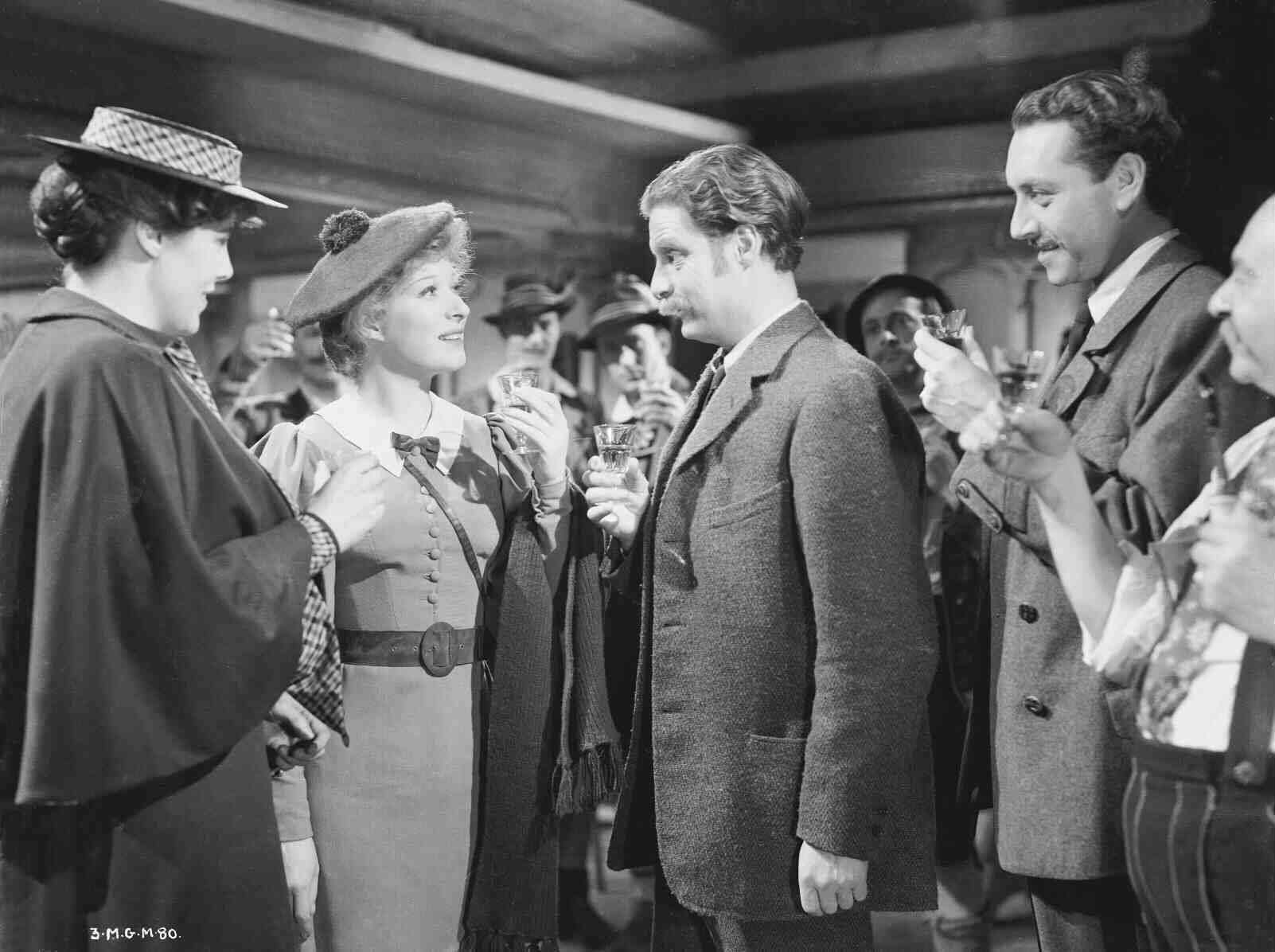Greer Garson
Greer Garson got her start as an actress in the British theater before moving to the big screen in her mid thirties. She was discovered by Louis B. Mayer, the co-founder of MGM, who quickly signed her to the studio. In her first film, she played the sweet and devoted wife (or love interest) opposite Robert Donat in Goodbye Mr. Chips (1939)where her memorable role plunged her into stardom.
From 1941-1945 she was nominated every year. Mrs. Miniver (1942) was undoubtedly the film that best captured the image that endeared her to audiences across the country and continent. It won her an Oscar and epitomized her image as a captivating leading lady. It also cemented her as the symbolic pillar of morality and sacrifice for the allies and particularly the U.S. during the war years*. But with the end of the war, her thus far highly successful career and image became unsustainable. She starred in similar as well as very different vehicles, but they either proved unfitting for what new audiences wanted to see her in or simply too disappointing for someone who had been a “gleaming beacon of hope.” She returned to the stage most notably starring in Auntie Mame in 1958. She didn't leave Hollywood completely, though. She came back to star in a few films, perhaps most notably as Eleanor Roosevelt in Sunrise at Campobello (1960) for which she received her final Oscar nomination.
Despite starting her acting career later than most, Garson was able to solidify herself as a leading lady very quickly. And she did more than that. She became a beacon of sacrifice and hope to others during a very dark time. It is difficult to describe, but she had a glow about her- perhaps it was her smile or eyes- that had the ability to light up the screen and seemingly reach out in friendship to her audiences. She may have been cast in many of the same roles, but that was in large part because what she brought to the screen in those parts was so special. It should not be missed by audiences today.
*Thomson, Henry. The New Biographical Dictionary of Film. Third Edition. New York: Knopf, 2002.
Core Films
*= my personal favorites
Goodbye Mr. Chips (1939)*
Pride and Prejudice (1940)
Mrs. Minivier (1942)*
Random Harvest (1942)*
Madame Curie (1943)
The Valley of Decision (1945)*
For More
Books
Biography; A Life of Barbara Stanwyck: Steel-True 1907-1940 by Victoria Wilson: https://www.barnesandnoble.com/p/a-life-of-barbara-stanwyck-victoria-wilson/1113741649/2672913326782?st=PLA&sid=BNB_ADL+Marketplace+Generic+New+Books+-+Desktop+Medium&sourceId=PLAGoNA&dpid=tdtve346c&2sid=Google_c&gclid=CjwKCAjw0tHoBRBhEiwAvP1GFU6fD72pOY394P7YWV3bRLLjodRAu72az-OebdgyU7OQCwLZ9ciDpxoCPM4QAvD_BwE
Article; A Girl Named Ruby: A Book Review of Victoria Wilson’s “Steel-True”: https://www.nytimes.com/2014/01/05/books/review/a-life-of-barbara-stanwyck-by-victoria-wilson.html





































